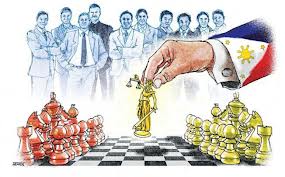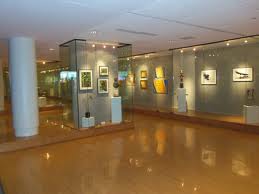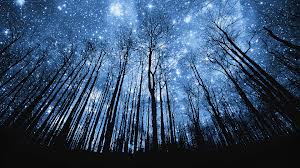Classificatory disputes about art

[Source Info: http://en.wikipedia.org/wiki/Classificatory_disputes_about_art ]
Art historians and philosophers of art have long had classificatory disputes about art regarding whether a particular cultural form or piece of work should be classified as art. Disputes about what does and does not count as art continue to occur today.
Defining art can be difficult. Aestheticians and art philosophers often engage in disputes about how to define art. By its original and broadest definition, art (from the Latin ars, meaning “skill” or “craft”) is the product or process of the effective application of a body of knowledge, most often using a set of skills; this meaning is preserved in such phrases as “liberal arts” and “martial arts”. However, in the modern use of the word, which rose to prominence after 1750, “art” is commonly understood to be skill used to produce an aesthetic result (Hatcher, 1999).
Britannica Online defines it as “the use of skill and imagination in the creation of aesthetic objects, environments, or experiences that can be shared with others”.But how best to define the term “art” today is a subject of much contention; many books and journal articles have been published arguing over even the basics of what we mean by the term “art” (Davies, 1991 and Carroll, 2000). Theodor Adorno claimed in 1969 “It is self-evident that nothing concerning art is self-evident anymore.” It is not clear who has the right to define art. Artists, philosophers, anthropologists, and psychologists all use the notion of art in their respective fields, and give it operational definitions that are not very similar to each other’s.
The second, more narrow, more recent sense of the word “art” is roughly as an abbreviation for creative art or “fine art.” Here we mean that skill is being used to express the artist’s creativity, or to engage the audience’s aesthetic sensibilities. Often, if the skill is being used to create objects with a practical use, rather than paintings or sculpture with no practical function other than as an artwork, it will be considered it as falling under classifications such as the decorative arts, applied art and craft rather than fine art. Likewise, if the skill is being used in a commercial or industrial way, it will be considered design instead of art. Some thinkers have argued that the difference between fine art and applied art has more to do with value judgments made about the art than any clear definitional difference (Novitz, 1992). The modern distinction does not work well for older periods, such as medieval art, where the most highly regarded art media at the time were often metalwork, engraved gems, textiles and other “applied arts”, and the perceived value of artworks often reflected the cost of the materials and sheer amount of time spent creating the work at least as much as the creative input of the artist.
Theories of art classification
The traditional Western classifications since the Renaissance have been variants of the hierarchy of genres based on the degree to which the work displays the imaginative input of the artist, using artistic theory that goes back to the ancient world. Such thinking received something of a boost with the aesthetics of Romanticism. A similar theoretical framework applied in traditional Chinese art; for example in both the Western and Far Eastern traditions of landscape painting (see literati painting), imaginary landscapes were accorded a higher status than realistic depictions of an actual landscape view – in the West relegated to “topographical views”.
Many have argued that it is a mistake to even try to define art or beauty, that they have no essence, and so can have no definition. Often, it is said that art is a cluster of related concepts rather than a single concept. Examples of this approach include Morris Weitz and Berys Gaut.
Another approach is to say that “art” is basically a sociological category, that whatever art schools and museums, and artists get away with is considered art regardless of formal definitions. This institutional theory of art has been championed by George Dickie. Most people did not consider a store-bought urinal or a sculptural depiction of a Brillo Box to be art until Marcel Duchamp and Andy Warhol (respectively) placed them in the context of art (i.e., the art gallery), which then provided the association of these objects with the values that define art.
Proceduralists often suggest that it is the process by which a work of art is created or viewed that makes it, art, not any inherent feature of an object, or how well received it is by the institutions of the art world after its introduction to society at large. For John Dewey, for instance, if the writer intended a piece to be a poem, it is one whether other poets acknowledge it or not. Whereas if exactly the same set of words was written by a journalist, intending them as shorthand notes to help him write a longer article later, these would not be a poem.
Leo Tolstoy, on the other hand, claims that what makes something art or not is how it is experienced by its audience, not by the intention of its creator.
Functionalists, like Monroe Beardsley argue that whether a piece counts as art depends on what function it plays in a particular context. For instance, the same Greek vase may play a non-artistic function in one context (carrying wine), and an artistic function in another context (helping us to appreciate the beauty of the human figure).
Disputes about classifying art
Philosopher David Novitz has argued that disagreements about the definition of art are rarely the heart of the problem, rather that “the passionate concerns and interests that humans vest in their social life” are “so much a part of all classificatory disputes about art” (Novitz, 1996). According to Novitz, classificatory disputes are more often disputes about our values and where we are trying to go with our society than they are about theory proper. For example, when the Daily Mail criticized Damien Hirst and Tracey Emin’s work by arguing “For 1,000 years art has been one of our great civilising forces. Today, pickled sheep and soiled beds threaten to make barbarians of us all” they are not advancing a definition or theory about art, but questioning the value of Hirst’s and Emin’s work.
On the other hand, Thierry de Duve[3] argues that disputes about the definition of art are a necessary consequence of Marcel Duchamp’s presentation of a readymade as a work of art. In his 1996 book Kant After Duchamp he reinterprets Kant’s Critique of Judgement exchanging the phrase “this is beautiful” with “this is art”, using Kantian aesthetics to address post-Duchampian art.
In the late 19th century, photography and cinema were both considered not to be art, and prominent critics argued that early cubist paintings were not art.
Conceptual art
The work of the French artist Marcel Duchamp from the 1910s and 1920s paved the way for the conceptualists, providing them with examples of prototypically conceptual works (the readymades, for instance) that defied previous categorisations. Conceptual art emerged as a movement during the 1960s. The first wave of the “conceptual art” movement extended from approximately 1967 to 1978. Early “concept” artists like Henry Flynt, Robert Morris and Ray Johnson influenced the later, widely-accepted movement of conceptual artists like Dan Graham, Hans Haacke, and Douglas Huebler.
More recently, the “Young British Artists” (YBAs), led by Damien Hirst, came to prominence in the 1990s and their work is seen as conceptual, even though it relies very heavily on the art object to make its impact. The term is used in relation to them on the basis that the object is not the artwork, or is often a found object, which has not needed artistic skill in its production. Tracey Emin is seen as a leading YBA and a conceptual artist, even though she has denied that she is and has emphasised personal emotional expression.
[for the article Full Rights Reserved ©Wikipedia Website]


